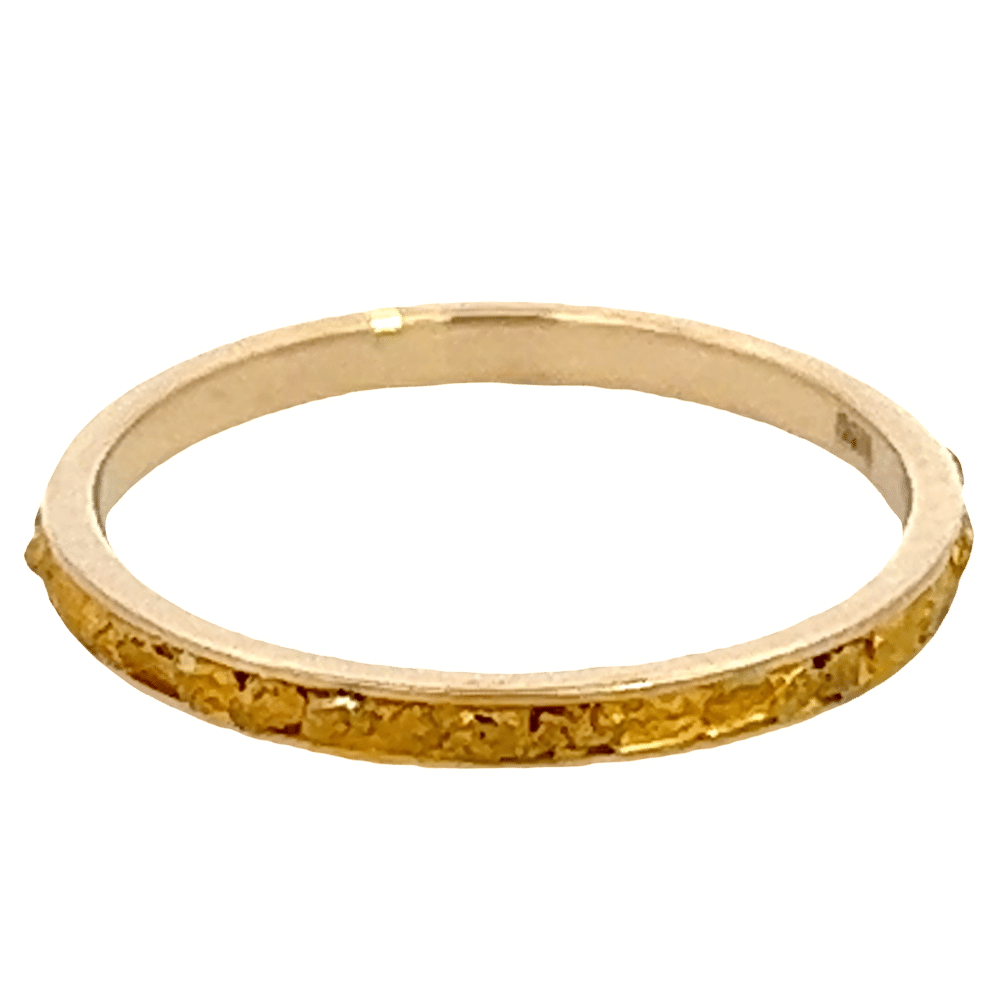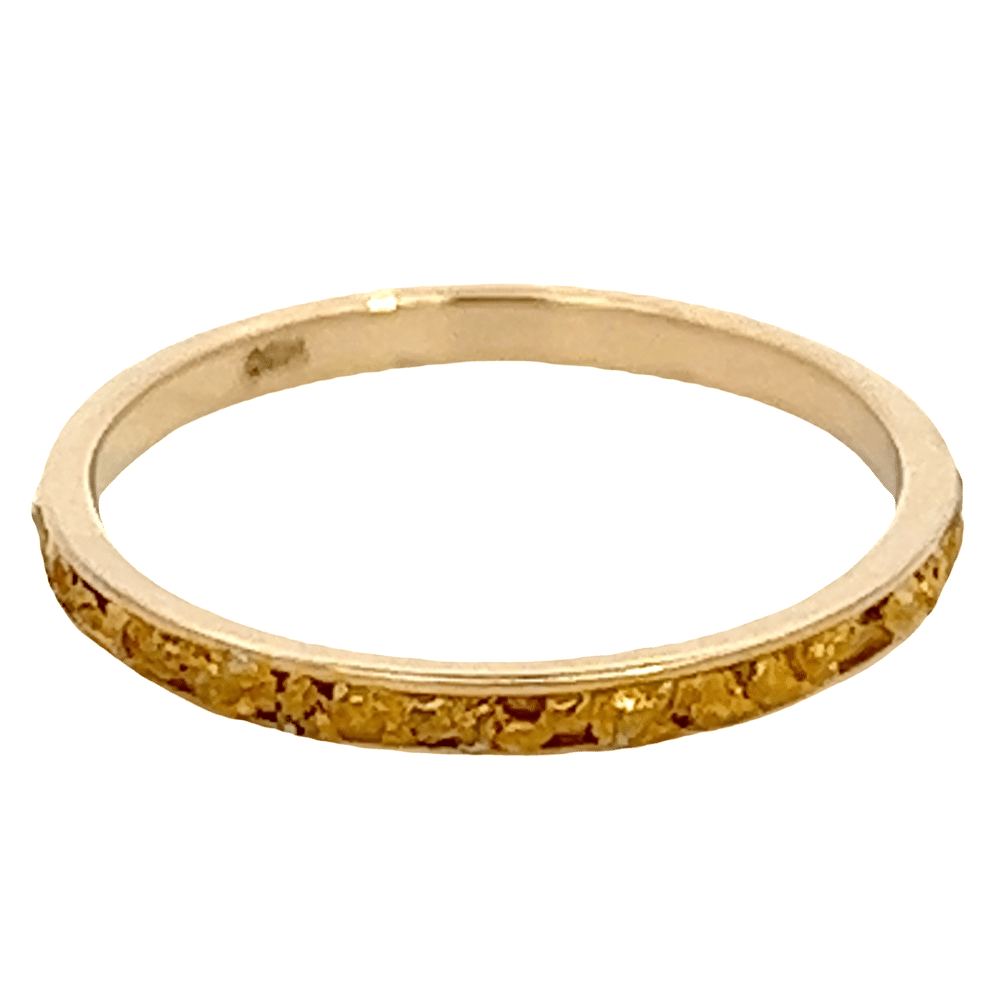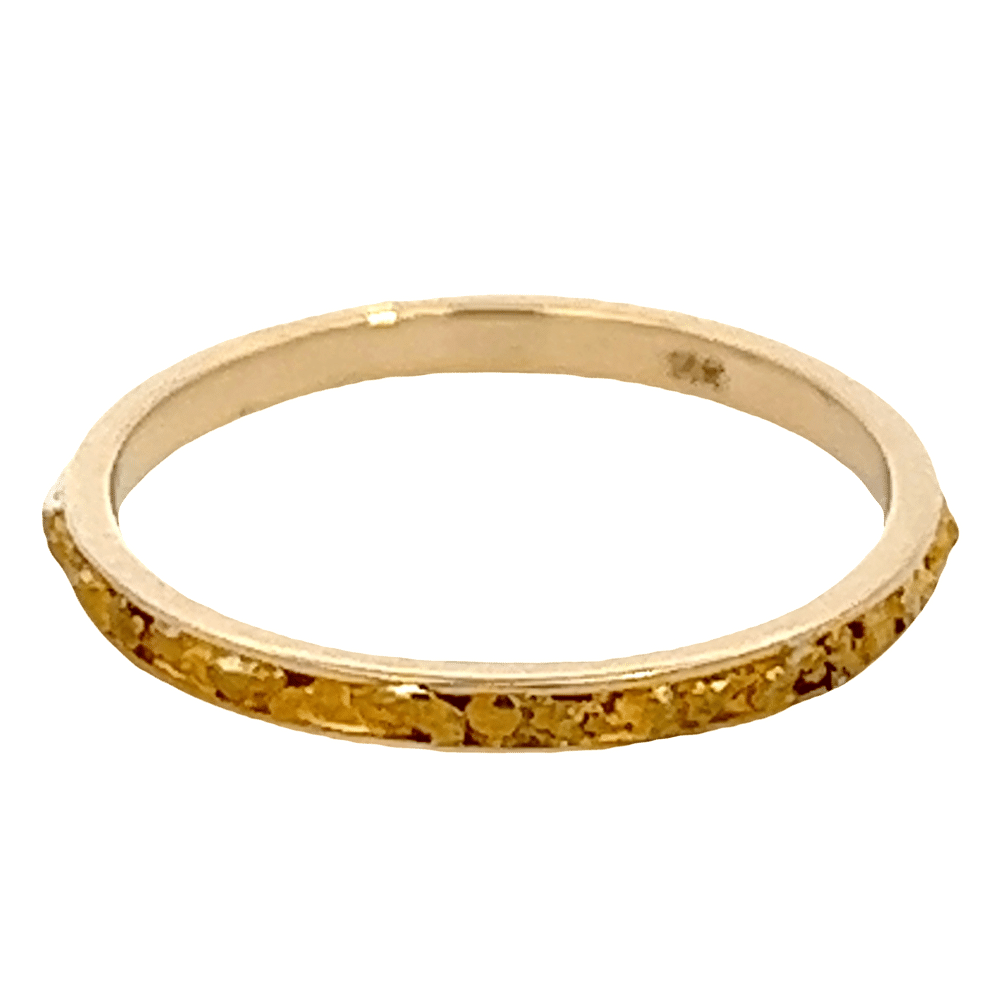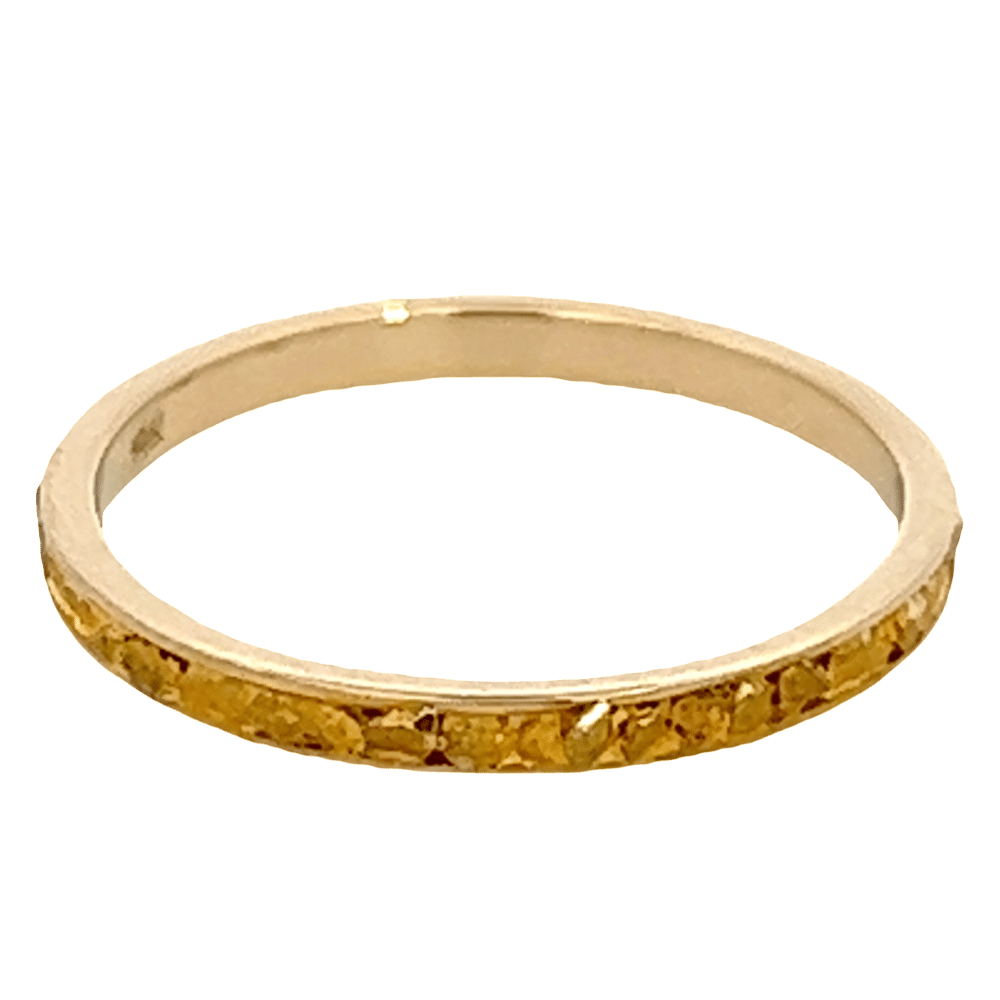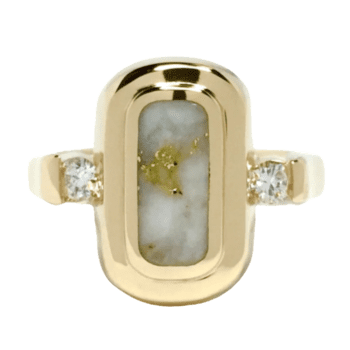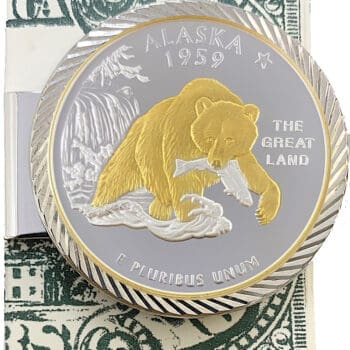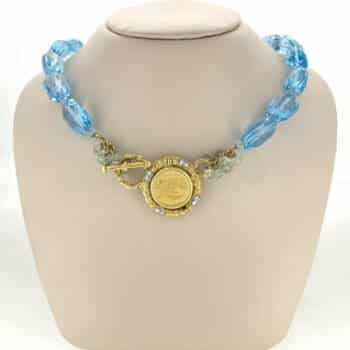2mm Ladies Gold Nugget Ring
This 2mm ladies gold nugget ring is expertly crafted with natural Alaskan gold nuggets carefully placed and soldered onto a 14k yellow gold band. Because we are using natural Alaskan gold nuggets, each ring is one-of-a-kind.
Gold Nugget Information:
Formation of Gold Nuggets: Geological processes deep within the Earth’s crust form gold nuggets. Miners typically find gold nuggets in quartz veins or other mineral deposits. Over time, weathering and erosion can break these deposits apart, releasing gold particles and nuggets into rivers and streams. Each piece is one of a kind with no two being exactly alike.
Where to Find Gold Nuggets: Regions with a history of gold mining, such as Alaska, California, Canada, and Australia, can produce gold nuggets. Wherever the effects of erosion took place. That would include rivers, streams, ancient dried up river channels and underground riverbeds. This type of gold is called placer gold.
Equipment and Tools: From gold pans and suction dredges that act like an underwater vacuum cleaner, to heavy equipment loading dirt and gravel into large trommels and sluice boxes, people search for gold. Additionally, metal detectors are particularly useful for locating gold nuggets hidden underground.
Identifying Gold Nuggets: Gold nuggets vary in size, shape, and purity. They can be small flakes or large, irregularly shaped pieces. Natural gold is bright yellow and heavy, so gold nuggets are usually much heavier than other similarly sized rocks. They may also have quartz or other minerals attached, as gold often forms in association with other minerals. Natural Alaskan gold is typically 75% to 95% pure, or 18k to 22k.
How to Weigh: Precious metals are weighed in troy ounces which are approximately 10% heavier than a regular ounce. 12 troy ounces = one pound vs. 16 regular (avoirdupois) ounces to the pound. Troy ounces are broken down into 20-penny weight (DWT) or 31.1 grams to the ounce. The larger the nugget the more rare and valuable they are, a one-ounce nugget is considered as rare as a five-carat diamond.

